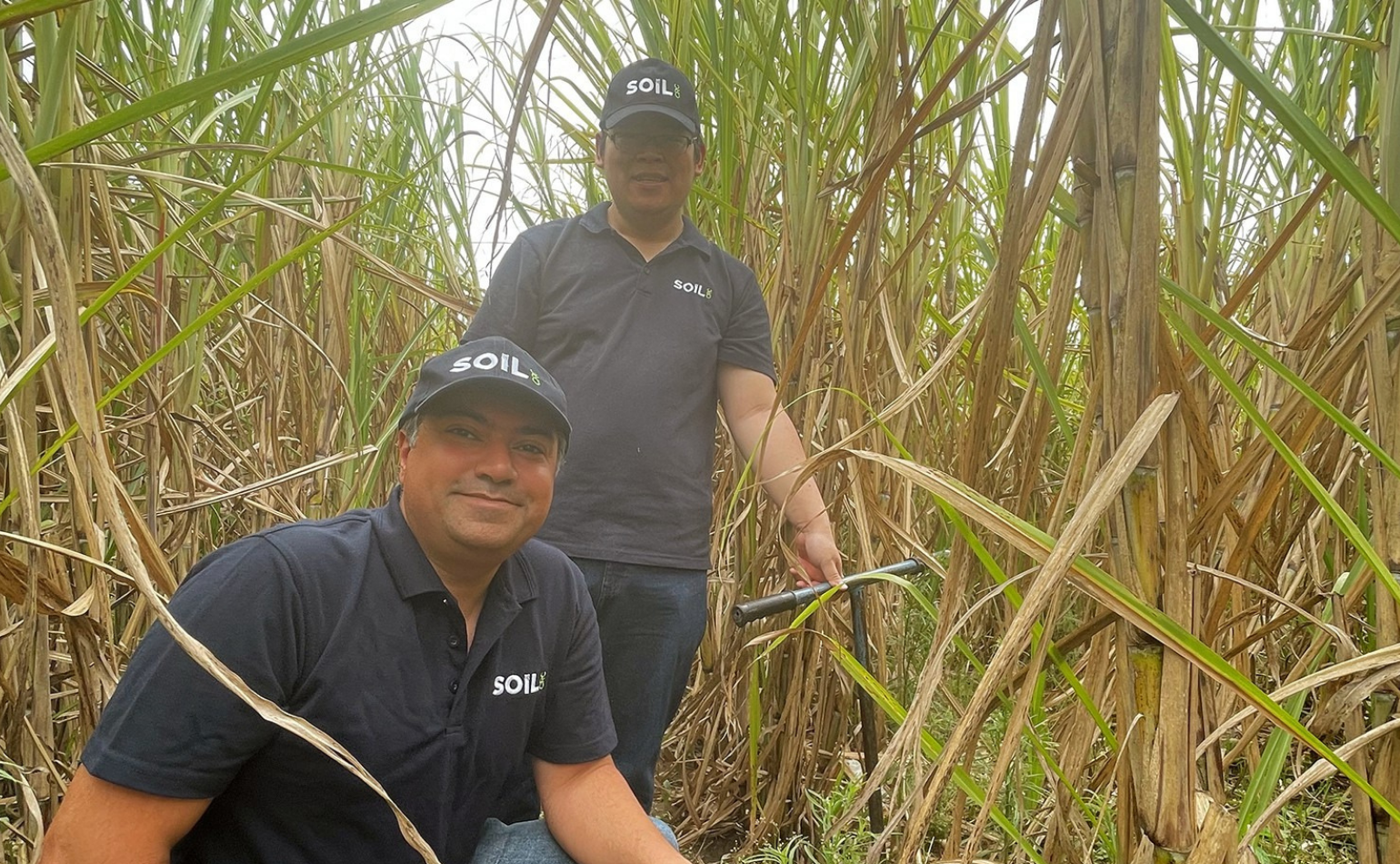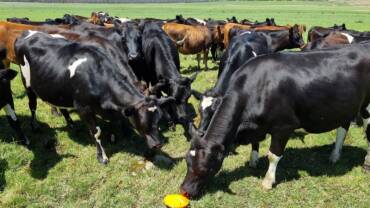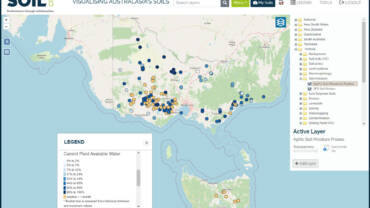Trials test soil microbes for resistance and resilience
| Posted Nov 04,2021Dr Mehran Rezaei Rashti (L) and PhD researcher Xiangyu Liu (R) from Griffith University sampling trial plots in sugarcane
Project: Evaluation of soil functional resistance
Project leader: Dr Mehran Rezaei Rashti, Griffith University
Environmental disturbance of agricultural soils has received significant attention in recent years, due to its impact on soil microbial activities as well as associated crop yield and soil health decline. However, the responses of soil microbial communities to compaction and drought stresses are largely unknown. This project developed a research framework to better understand the effect of soil properties (e.g. texture, water-filled pore space and organic matter content) and field management practices (e.g. cover cropping, crop rotation and plant residue amendment) on soil functional resistance and resilience to environmental stresses. The resultant robust and affordable assessment methods and procedures can be used for re-engineering soils in different cropping systems, to encourage better management practices and increase the profitability of agricultural industries.
PROJECT UPDATE
Although the effects of environmental stresses on soil physical, chemical, and biological properties have been widely investigated in recent years, the process-based understanding of soil microbial functional resistance and resilience to compaction and drought stresses in agricultural systems is very limited.
In forest systems that have transitioned into farming, environmental scientists use protocols measuring carbon dioxide respiration to indicate soil microbial activity as a measure of soil health. This project aimed to apply a similar theory to agricultural systems.
“We know soil health is declining over time and we usually assess that by measuring soil physical and chemical properties, but these factors may vary too much or are not sensitive enough in their response to changes in the environment,” says project leader, Dr Mehran Rezaei Rashti.
“In this project we used the response of soil microorganisms as a new way of measuring resistance and resilience to environmental stresses.”
Soil resistance is defined as the ability of a soil to maintain its functional stability after a disturbance, and soil resilience is the speed with which a soil system can return to its pre-disturbance condition.
The research looked at relationships between compaction and drought stresses, and soil resilience and functionality, in three experiments:
- In sugarcane cropping systems, soil microbial responses were recorded where stresses were applied and responses measured in two contrasting sand and clay soils. A gradient of bulk densities (0.9 g cm-3 – 1.5 g cm-3) and water-filled pore spaces (21% to 100%) were applied to both soils. The clay soil had a higher resistance index of microbial carbon use efficiency, while the sandy soil had a higher resilience index of microbial carbon use efficiency.
- In sugarcane cropping systems, the effect of conventional field management (furrow planting and grassy fallow) and improved management (minimum tillage, mound planting and multiple species legume fallow) on resistance and resilience to compaction stress was measured in two adjacent silty loam soils with similar properties. Compaction stress of 1.4 g m-3 was applied at the start of the experiment (resistance phase) and then removed after one month (resilience phase). The improved management practices increased soil microbial functional resistance and resilience to compaction stress.
- In grain cropping systems, the effect of field management history in improving soil resistance and resilience to drought stress was tested. Two adjacent loamy soils with improved management history (crop rotation of wheat, lupin, barley, wheat) and conventional (wheat monoculture) were treated with severe, moderate and nil levels of drought stress. The crop rotation practice increased soil microbial functional resistance and resilience to drought stress.
The results show the response pattern of the soil microbial community to environmental disturbance is highly related to soil texture and the applied stress levels, rather than the history of field management practices.
However improved field management practices can increase soil organic matter content, labile carbon and nitrogen pools, and the diversity of the soil microbial community, which significantly boosts resistance and resilience to compaction and drought stresses.
Soils with fine texture had higher resistance of microbial carbon-use efficiency to compaction and drought stresses, while coarse textured soils showed higher resilience.
NEXT STEPS
With an assessment tool generated, Dr Rashti says the next couple of months will see further investigation of the effect of ecosystem processes on improvement of soil carbon stocks (quality and quantity) and soil functional resilience to environmental stresses.
Researchers will use nuclear magnetic resonance to look at soil organic carbon pools, to find out which part of the pools contribute to generated resilience.
Trials will be carried out on soils in existing Soil CRC field trials in Western Australia, South Australia, New South Wales and Queensland that have been addressing different soil constraints using ecosystem-based management practices for the past five years.
The aim is to value-add to previous Soil CRC projects by quantifying the benefits to soil carbon stocks and resilience, and determining when the applied management practices will deliver positive outcomes.
“The whole idea is to provide some stability for farming systems to ensure an optimal yield, which is even more critical in our changing climate. If we can generate the information that shows agricultural land is resistant and resilient to climate changes, then banks or finance companies can be assured that their investment is secure.”
Dr Rashti
“Most soil systems recover very fast from stress. But based on the management and potential of each soil and the period of stress, that response or bounce-back may exceed a certain point and then there’s a low chance of recovery.
“This is a new and complex area of research. We need to appreciate that we don’t fully understand the reasons behind these changes but being able to measure them and differentiate the changes is good. Over time we’ll develop a better understanding and be able to predict them more accurately.”





